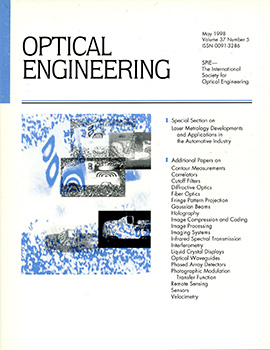Xiandi Zeng, Alfred Wicks, Thomas Allen
Optical Engineering, Vol. 37, Issue 05, (May 1998) https://doi.org/10.1117/1.601653
TOPICS: Velocity measurements, Doppler effect, Laser systems engineering, Affine motion model, Laser applications, Statistical modeling, Data modeling, Laser scanners, 3D scanning, Optical engineering
A scanning laser Doppler vibrometer (SLDV) is an optical instrument that can scan an area to measure the velocity field of structures. It has been widely used in the automotive industry. In some applications, the pose (position and orientation) of the SLVd are required. First, this paper describes two such applications. Then it presents a nonlinear regressive model for the pose determination of the SLDV with respect to a structural coordinate system. The model is derived from coordinate transformation and the scanner model. In it, the pose is expressed by six independent parameters: three for the translation vector and three for the rotation matrix. The six parameters are estimated by using the least-squares technique. Statistical inferences about this model are obtained by linear approximation. To determine the pose, four or more registration (reference) points are required. For each registration point, the structural coordinates and its corresponding input voltages need to be known. The model has been implemented in a laser-based data acquisition system, which has been used for modal analysis, structural dynamic modifications, and noise control.



 Receive Email Alerts
Receive Email Alerts